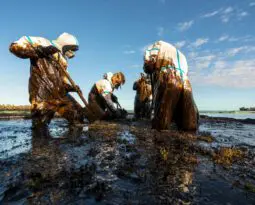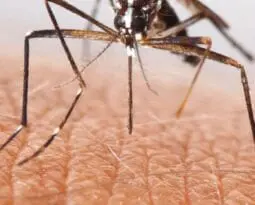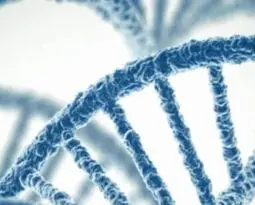Ethics and Environment
Selected resources from The Hastings Center.
Bioethics Briefings:
Hastings Center Bioethics Briefing
The issues that arise in environmental health ethics are complex, multifaceted, dynamic, and global in scope. Finding satisfactory solutions to environmental health problems will become increasingly important as the environmental impacts of human activities continue to mount, and we learn more about the relationship between human health and the environment. Read our Bioethics Briefing to consider the questions: How does the built environment impact human health? How do human activities impact the environment? And how will new and evolving technologies impact these relationships?
From Hastings Bioethics Forum:
- Now What? Bioethics and Mitigating Climate DisastersFor those committed to realistic responses to our current climate crisis, the results of the presidential election are a major step backward. Announcements…
- Do Your Part to Address Climate Change: VoteHow we can help reduce emissions at the scale needed to avert the worst of climate change? Vote for leaders who value emissions reduction and carbon neutrality and vote against those who discount, greenwash, or oppose it.
- Catastrophe Ethics and Charitable GivingHow can we live a morally decent life in a time of massive, structural threats that seem to implicate us at every turn? Climate change is the paradigm example. Am I permitted to fly? Should I buy an electric car? Go vegan?
- Philanthropy is Not Enough: Oil and Gas Giants Must Consider Medical EthicsGiven the well-known environmental and health risks of oil and gas drilling, oil and gas giants that enter developing nations routinely offset these risks with charitable investments. Are these investments sufficient? Do the funds go where they are needed? Answering this question raises ethical issues that need greater attention.
- An Evergreen Metaphor: Strachan Donnelley, Dan Callahan, and Environmental EthicsThe devastation of Hurricane Ida and the global threats of climate change are not on the fringe of bioethics. They call to mind the language of priority-setting typical of bioethics discourse. Who lives and who dies? What can be accomplished with prevention and more levees? And if more are built, how do we set priorities with limited resources?
- Living Good and Healthy Lives on a Changing Earth: What Should Bioethics Do?What does it mean to live well on a warming planet? And as the climate changes, how might health care, education, and other sectors support, or obstruct, our ability to respond? The answers to these profound, and profoundly bioethical, questions will critically influence human well-being in this century and beyond. A group of scientists, educators, and bioethicists convened at The Hastings Center recently to consider these questions and begin an interdisciplinary conversation on how bioethics might address the challenges posed by climate change.
- Fix the Planet, or Change the Creatures In It?Possibly as many as half of the coral reefs that existed 100 years ago have been destroyed, sometimes by removing them, covering them…
- The Climate Agreement: Understanding, and Leveraging, Public OpinionAfter years of fluctuating and troubled efforts, the nations of the world in December of 2015 came to the remarkable agreement to work…
- On a Radioactive Pig and Pope Francis“If you look through the red-tinted glass, you will see the radioactive pig,” said the director of animal laboratories at my university–let’s call…
- New in Skin Care: Natural and GMOAt the end of April, the biotech firm Amyris announced that it was launching its own line of skin emollient under the brand…
- GM Mosquitoes: Risks and EmotionsFor several years, a British company called Oxitec has been proposing a strategy for controlling a species of mosquito, Aedes aegypti, that humans…
- Altering Nature to Preserve ItPerhaps the biggest challenge in talking about something like de-extinction is simply being clear on what it is you’re really talking about. Emerging…
- Synthetic Biology: A Study in ReinventionAn article in the October issue of Discover Magazine has a great line from Drew Endy, a bioengineer at Stanford University who has become one of the…
- Nature Isn’t What It Used To BeIs the end in sight for wilderness? A recent opinion piece in the New York Times, by the science journalist Christopher Solomon, says it is. “There’s…
- The Push for Data Transparency and Implications for ResearchSome of the most hotly debated questions making the rounds these days include who should interpret, distribute, review, and receive data, and with…
From Hastings Center Report:
Maybe We Should Try the Precautionary Principle?
First published: 13 October 2022
Abstract
How do policy-makers call shots on major decisions—such as putting a country into lockdown to mitigate the risk of Covid-19—when they don’t have all the scientific facts about how the virus spreads? And to which moral values do they appeal when weighing the health and economic risks involved? David B. Resnik addresses such questions in his book Precautionary Reasoning in Environmental and Public Health Policy (Springer, 2021), which provides a fresh perspective on the precautionary principle. The precautionary principle captures the common intuition “better safe than sorry” but is also a contentious facet of precautionary reasoning. Resnik’s novel approach to the precautionary principle and detailed discussion of moral values makes this book an excellent read for anyone interested in policy-making, philosophy, or public health.
Carbon Emissions from Overuse of U.S. Health Care: Medical and Ethical Problems
First published: 22 August 2022
Abstract:
The United States health care industry is the second largest in the world, expending an estimated 479 million metric tons (MMT) of carbon dioxide per year, nearly 8 percent of the country’s total emissions. The importance of carbon reduction in health care is slowly being accepted. However, efforts to “green” health care are incomplete since they generally focus on buildings and structures. Yet hospital care and clinical service sectors contribute the most carbon dioxide within the U.S. health care industry, with structures/equipment and pharmaceuticals ranking as the third and fourth highest emitters in the industry. Given the magnitude of health care carbon emissions—and the paucity of attention to the carbon of hospital care and clinical services—this essay identifies overuse of health care as a health threat with serious ethical implications, offers a data-driven action plan for carbon reduction in health care, and provides practical suggestions for more sustainable health care delivery in the United States.
On Ethicists and Their Diets
First published: 10 February 2022
Abstract
Factory farming is one of the most destructive institutions in human history. In the United States alone, it raises and kills ten billion animals every year. Conditions in which animals live and the way they are treated in transit are exceptionally cruel. Factory farming is also an environmental disaster. Do ethicists have a greater obligation than the average person to maintain an ethical diet? Various psychological and cultural factors explain why most people in our society regularly consume meat, eggs, and dairy products from factory farms even though there is an overwhelmingly strong case that doing so is wrong. But ethicists are supposed to be good at examining important ethical questions. So, while they have the same obligation as everyone else, ethicists have no excuses for failing to understand dietary ethics and living accordingly.
Public Deliberation about Gene Editing in the Wild
First published: 14 December 2021
Abstract
Genetic editing technologies have long been used to modify domesticated nonhuman animals and plants. Recently, attention and funding have also been directed toward projects for modifying nonhuman organisms in the shared environment—that is, in the “wild.” Interest in gene editing nonhuman organisms for wild release is motivated by a variety of goals, and such releases hold the possibility of significant, potentially transformative benefit. The technologies also pose risks and are often surrounded by a high uncertainty. Given the stakes, scientists and advisory bodies have called for public engagement in the science, ethics, and governance of gene editing research in nonhuman organisms. Most calls for public engagement lack details about how to design a broad public deliberation, including questions about participation, how to structure the conversations, how to report on the content, and how to link the deliberations to policy. We summarize the key design elements that can improve broad public deliberations about gene editing in the wild.
Genetic Control in Historical Perspective: The Legacy of India’s Genetic Control of Mosquitoes Unit
First published: 14 December 2021
Abstract
In the early 1970s, a World Health Organization-initiated and United States-funded project released lab-reared mosquitoes outside New Delhi in the first large-scale field trials of the genetic control of mosquitoes. Despite partnering with the Indian Council of Medical Research and investing significantly in outreach to local communities at the release sites, the project was embroiled in controversy and became an object of vehement debate within the Indian parliament and diplomatic contretemps between the United States and India. This early episode of genetic control research demonstrates how a scientific collaboration was entangled in geopolitics and shaped by the legacy of colonialism. This historical case study has implications for public deliberation in the present, pointing to the challenges of shared decision-making in the context of structural inequality, the way that a backdrop of military interest in a technology can impede trust, and the long-term consequences of projects that foster mistrust.
Deficits of Public Deliberation in U.S. Oversight for Gene Edited Organisms
First published: 14 December 2021
Abstract
Environmental releases of gene edited (GEdOs) and gene drive organisms (GDOs) will likely occur under conditions of high uncertainty and in complex socioecological systems. Therefore, public deliberation is especially important to account for diverse interpretations of safety, risks, and benefits; to draw on experiential and public wisdom in areas of proposed release; to ameliorate dangers of technological optimism; and to increase the public legitimacy of decisions. Yet there is a “democratic deficit” in the United States’ oversight system for GEdOs and GDOs, as unconflicted experts, publics, and skeptical stakeholders are most often excluded from decision-making and unavailable to critically examine potential risks and benefits or raise broader concerns about socioeconomic or cultural impacts. This article argues for the need to open up decision-making for GEdOs and GDOs, discusses the challenges for doing so within the current oversight framework, and finally, proposes institutional, policy, and attitudinal changes that are likely important for overcoming barriers to public deliberation.
Does Gene Editing in the Wild Require Broad Public Deliberation?
First published: 14 December 2021
Abstract
How strong is the argument for requiring public deliberation by very large publics—at national or even global levels—before moving forward with efforts to use gene editing on wild populations of plants or animals? Should there be a general moratorium on any such efforts until such broad public deliberation has been successfully carried out? This article works toward recommendations about the need for and general framing of broad public deliberation. It finds that broad public deliberation is highly desirable but not flatly necessary before moving forward with any local cases of gene editing in the wild. It also finds that broad public deliberation would be most helpful in generating very general guidance and is unlikely to be appropriate for specific cases. Broad public deliberation is most helpful for cases that involve higher levels of uncertainty and moral ambiguity, but separating out a distinct class of cases for deliberation is not yet possible.
Regulating Gene Editing in the Wild: Building Regulatory Capacity to Incorporate Deliberative Democracy
First published: 14 December 2021
Abstract
The release of genetically engineered organisms into the shared environment raises scientific, ethical, and societal issues. Using some form of democratic deliberation to provide the public with a voice on the policies that govern these technologies is important, but there has not been enough attention to how we should connect public deliberation to the existing regulatory process. Drawing on lessons from previous public deliberative efforts by U.S. federal agencies, we identify several practical issues that will need to be addressed if relevant federal agencies are to undertake public deliberative activities to inform decision-making about gene editing in the wild. We argue that, while agencies may have institutional capacity to undertake public deliberative activities, there may not be sufficient political support for them to do so. Advocates of public deliberation need to make a stronger case to Congress about why federal agencies should be encouraged and supported to conduct public deliberations.
The Decision Phases Framework for Public Engagement: Engaging Stakeholders about Gene Editing in the Wild
First published: 14 December 2021
Abstract
Some experts and advocates propose environmental biotechnologies such as genetic engineering, gene drive systems, and synthetic biology as potential solutions to accelerating rates of species loss. While these tools may offer hope for a seemingly intractable problem, they also present potential governance challenges for which innovative decision-making systems are required. Two of the perennial governance challenges include, when are broader stakeholder groups involved in these decisions and who exactly should be involved? We propose the decision phases framework—which includes research and development, regulatory review, and deployment, management, and monitoring—as a framework for identifying which stakeholders might be best suited for different phases throughout the innovation and deployment of emerging environmental biotechnologies for species protection.
Giving Voice to the Voiceless in Environmental Gene Editing
First published: 14 December 2021
Abstract
Participatory deliberation, whereby diverse experts and publics collectively engage in decision-making, can ensure a more informed and just decision by centering historically marginalized perspectives and engaging a spectrum of value systems. Broad and diverse participation is crucial for the equitable distribution of risks and benefits resulting from complex and uncertain decisions such as environmental gene editing. From an ethical position that gives intrinsic value to the nonhuman and recognizes the interconnectedness of species across generations, we argue that deliberation over environmental gene editing must include the voice of nature and the voice of future generations. Inclusion of these key participant groups can encourage reflection on the human relationship with nature and help safeguard intergenerational equity of decisions reached. By drawing from the legal rights of nature movement, the Boardman River Dams Project, and methods for representative participation, we offer strategies for inclusion of nonhuman nature and future generations in deliberative processes about environmental gene editing and other crucial decisions about our shared environments.
Empowering Indigenous Knowledge in Deliberations on Gene Editing in the Wild
First published: 14 December 2021
Abstract
Proposals to release genetically engineered organisms in the wild raise complex ethical issues related to their safe and equitable implementation. While there is broad agreement that community and public engagement is vital to decision-making in this context, more discussion is needed about who should be engaged in such activities and in what ways. This article identifies Indigenous peoples as key stakeholders in decisions about gene-editing in the wild and argues that engagement activities need not only include Indigenous peoples but also be designed, conducted, and analyzed in ways that confront longstanding power imbalances that dismiss Indigenous expertise. We offer specific recommendations to guide deliberative activities to not only be inclusive of Indigenous peoples but also to empower their diverse, situated knowledges. We call on those committed to the inclusive design of broad public deliberation to pursue strategies that shift dominant power dynamics to include Indigenous communities in more meaningful ways.
Narratives in Public Deliberation: Empowering Gene Editing Debate with Storytelling
First published: 14 December 2021
Abstract
Gene editing in the environment must consider uncertainty about potential benefits and risks for different populations and under different conditions. There are disagreements about the weight and balance of harms and benefits. Deliberative and community-led approaches offer the opportunity to engage and empower diverse publics to co-create responses and solutions to controversial policy choices in a manner that is inclusive of diverse perspectives. Stories, understood as situated accounts that reflect a person’s life experiences, can enable the articulation of nuanced perspectives, diversify how perspectives are communicated, encourage wider participation, open dominant perspectives to challenge, and invite participants to assess appropriate empathy and precaution in collective positions. An emphasis on storytelling in deliberations on gene editing of organisms emphasizes carefully designed recruitment and facilitation to support hearing from a range of perspectives, including those that present a different set of assumptions than those that may be held by experts or other stakeholders, among these, consideration of how to understand our relationships to nature.
Envisioning Complex Futures: Collective Narratives and Reasoning in Deliberations over Gene Editing in the Wild
First published: 14 December 2021
Abstract
The development of technologies for gene editing in the wild has the potential to generate tremendous benefit, but also raises important concerns. Using some form of public deliberation to inform decisions about the use of these technologies is appealing, but public deliberation about them will tend to fall back on various forms of heuristics to account for limited personal experience with these technologies. Deliberations are likely to involve narrative reasoning—or reasoning embedded within stories. These are used to help people discuss risks, processes, and fears that are otherwise difficult to convey. In this article, we identify three forms of collective narrative that are particularly relevant to debates about modifying genes in the wild. Our purpose is not to privilege any particular narrative, but to encourage people involved in deliberations to make these narratives transparent. Doing so can help guard against the way some narratives—referred to here as “crafted narratives”—may be manipulated by powerful elites and concentrated economic interests for their own strategic ends.
Essential Reading for Bioethicists in the Anthropocene Era
First published: 13 July 2021
Abstract
The multiple emergencies of global heating require bioethicists to embrace the dormant, comprehensive bioethics legacy of Van Rensselaer Potter, moving beyond the current narrower focus of the field on medicine and health care. We recommend readings that expand the core literature of bioethics to address key environmental issues. These are Jessica Pierce and Andrew Jameton’s The Ethics of Environmentally Responsible Health Care; Dale Jamieson’s Reason in a Dark Time; and David Wallace-Well’s The Uninhabitable Earth. Because efforts to mitigate climate disasters are likely to be only partially successful, we also recommend the teachings of late Roman Stoicism and core texts of Buddhism, which provide ethical wisdom likely to be needed in the multiple crises of the Anthropocene.
In the Name of Racial Justice: Why Bioethics Should Care about Environmental Toxins
First published: 24 May 2021
Abstract
Facilities that emit hazardous toxins, such as toxic landfills, oil refineries, and chemical plants, are disproportionately located in predominantly Black, Latinx, and Indigenous neighborhoods. Environmental injustices like these threaten just distribution of health itself, including access to health that is not dependent on having the right skin color, living in the right neighborhood, or making the right amount of money. Facilities that emit environmental toxins wrongly make people’s race, ethnicity, income, and neighborhood essential to who is allowed to breathe clean air and drink clean water, and thus, who is allowed to be healthy. This can be seen in the environmental crises in Louisiana; Mississippi; Houston, Texas; and Flint, Michigan. Since bioethics purports to concern itself with the principle of justice as applied to individuals and increasingly to populations, the field ought to concern itself more with environmental injustice.
Planetary Ethics: Russell Train and Richard Nixon at the Creation
First published: 29 June 2020
Abstract
This piece offers a retrospective review of a plenary speech at the 1969 Annual Meeting of the American Public Health Association by the leading environmentalist of the Nixon administration, attorney and judge Russell Train. Train’s talk, titled “Prescription for a Planet,” can be seen as an early argument for uniting environmental health and public health as the two main determinants of both individual and population health and for the inclusion of these fields in the then-new field of “bioethics.”
Lessons from Environmental Regulation
First published: 16 February 2018
Abstract
Much of the most substantive and in-depth experience with formal cost-benefit analysis in the public policy realm has occurred in the context of federal environmental regulation in the United States. This experience has many important lessons to teach in the realm of synthetic biology. Indeed, many of the dangers and pitfalls that arise when decision-makers use formal CBA to evaluate environmental regulation seem likely to arise in the synthetic biology context as well, sometimes in particularly troubling forms. Unfortunately, while in many instances these concerns may well point toward a rejection of formal CBA for synthetic biology, the experience from environmental regulation turns out to be far less helpful in identifying alternative decision-making tools. Because the decisions that arise in the synthetic biology context have a fundamentally different structure from decisions about environmental regulation, the most useful alternatives from that context do not map easily onto this new context.
It may well be generally true that in the search for decision-making tools, we should not be looking for a single silver bullet that will work in all public policy realms. Perhaps, instead, different kinds of decision-making call for different tools. This may be true even within the realm of synthetic biology. I am not entirely sure what the “right” tool is for synthetic biology applications, or even whether a “right” tool exists. But at the end of this essay, I offer a few tentative thoughts about why scenario analysis—a strategic planning tool first developed in the context of military planning following World War II—might be one alternative worth considering.
From CBA to Precautionary Appraisal: Practical Responses to Intractable Problems
First published: 16 February 2018
Abstract
The purpose of this essay is to critically review the design of methods for ethically robust forms of technology appraisal in the regulation of research and innovation in synthetic biology. It will focus, in particular, on the extent to which cost-benefit analysis offers a basis for informing decisions about which technological pathways to pursue and which to discourage. A further goal is to consider what (if anything) the precautionary principle might offer in enabling better decisions. And this, in turn, raises questions about why mention of precaution can excite accusations of unscientific bias or irrational, “anti-innovation” extremism. What does the polarized debate tell us about the politics around synthetic biology? In seeking more rigorous, timely, and practical ways to govern these remarkable new technologies, what might we be missing?
The sophistication, diversity, and scope of synthetic biology may seem to make it a rather idiosyncratic area for exploring these general issues. It may seem to be a special case, with the bewildering pace of change amplifying the difficulties. But at root, some of the trickiest issues are just specific instances of familiar and long-standing conundrums in the governance of science and technology. The basic challenge is how to weigh up, for a wide range of potential options, the various pros and cons, as viewed from divergent perspectives, and find a way to justify the best course of action on behalf of society as a whole. This is the central problem addressed by a number of techniques in CBA. On the face of it, synthetic biology seems to present just one more application of these well-established and self-confident prescriptive methods.
But there do emerge several obstinate, even prohibitive, difficulties for CBA. Although they are well acknowledged by the scholarly literature on and around this topic, they are often sidelined in practice. Yet all are central to the case for applying the concept of precaution to a field like synthetic biology. This essay will briefly explore multicriteria mapping, an appraisal method for exploring contrasting perspectives on emerging technologies, as one practical way to address them. The essay focuses on MCM, not because it presents any sort of panacea for appraisal, but because it is illustrative of the concrete implications of precaution. Setting out even just one among potentially many practical alternative methods at least refutes the last-ditch argument that CBA is the only operational choice.
CBA and Precaution: Policy-Making about Emerging Technologies
First published: 16 February 2018
Abstract
In the technology assessment literature, the leading alternative to CBA-like methods is usually held to be precaution, which is understood in various ways but is always about making decisions under conditions of uncertainty. Under such conditions, proponents of precaution commonly hold, a straightforward tallying of potential outcomes does not seem possible. Since CBA aims to tally up outcomes to determine which outcome would produce the greatest public benefit, precaution begins to look like, not just an alternative to CBA, but an incompatible alternative.
Nonetheless, some of the better-known formulations of a precautionary principle expressly call for combining precaution with assessment of costs and benefits. This essay examines the possible intersection of precaution and CBA. It argues that a moderate kind of CBA is a necessary part of a moderate kind of precaution. The existing proposals for integrating CBA and precaution start with an assumption that the integrative task consists in combining decision tools that generate (contrasting) substantive guidance. An alternative approach, explored here, starts with the idea that precaution is not a decision-generating tool. Rather, it is a way of organizing the thinking that leads eventually to substantive conclusions. The appropriate policy response is reached not by applying a principle but by studying the situation—the proposed action and the problem it is meant to address—and developing recommendations tailored to it. What makes the thinking precautionary is that it emphasizes certain questions—about risk, uncertainty, and values—that CBA tends to suppress. So understood, precaution may well slow the science but is not intrinsically opposed to science or innovation. It can be understood, in fact, as continuous with the science because the contextual understanding of the science and the problems it is meant to address would emerge—in part—from a close engagement with the science.
Conservationism and Bioethics
First published: 27 July 2017
Abstract
The lead article in this issue of the Hastings Center Report (July-August 2017) explores the ideas underpinning the Precision Medicine Initiative, the effort announced by President Obama in 2015 to promote the development of treatments adjusted to genetic and other variations. Authors Maya Sabatello and Paul Appelbaum hold that the effort works by appealing to a sense of collective identity and shared commitment—an understanding that they call the “PMI nation.” But what are the moral implications of this idea? Sabatello and Appelbaum’s question about the impact of an imagined community is an unusual way of exploring a set of values questions. In the second article, Johann Brännmark defends what is, at least in bioethics, an unusual philosophical framework for moral values. Brännmark starts by calling attention to large, never-quite-solved problems with the field’s going way of understanding personhood and autonomy, and then argues that the body of tradition, law, and international governance known as the human-rights framework offers a solution to those problems. And a supplement to this issue offers a set of essays on a topic outside the usual range for bioethics: the prospect of “de-extinction”—that is, of using genetic and reproductive technologies to construct simulacra of extinct animals that might eventually be introduced into the wild.
De-extinction and Conservation
First published: 16 July 2017
Abstract
We are living in what is widely considered the sixth major extinction. Most ecologists believe that biodiversity is disappearing at an alarming rate, with up to 150 species going extinct per day according to scientists working with the United Nations Convention on Biological Diversity. Part of the reason the loss signified by biological extinction feels painful is that it seems irremediable. These creatures are gone, and there’s nothing to be done about it. In recent years, however, the possibility has been broached that, just possibly, something can be done, in at least some cases. Human ingenuity, a contributing factor in the extinction crisis, might achieve their “de-extinction”—in at least some cases, and with sometimes significant qualifications about whether the original species had been “recreated” and whether it could resume its original place in the environment.
De-extinction is an entry point into a larger set of questions about how biotechnological tools can support, coexist with, or undermine the goals of conservation and about the very meaning of conservation. Are we beings in control of the world or beings who prosper by accommodating ourselves to webs of symbiotic interdependencies? Are we creators or creatures, or both—and if both, then how can we achieve the balance between them that might be called humility? The interplay of perfecting and accommodating is not unique to human beings—perhaps it characterizes all forms of life on Earth—but with humans, these modes of being are distinctive, and our technology greatly expands their scale and effects. It is such questions that the ten essays in this special report explore.
De-extinction and Barriers to the Application of New Conservation Tools
First published: 16 July 2017
Abstract
Decades of globally coordinated work in conservation have failed to slow the loss of biodiversity. To do better—even if that means nothing more than failing less spectacularly—bolder thinking is necessary. One of the first possible conservation applications of synthetic biology to be debated is the use of genetic tools to resurrect once-extinct species. Since the currency of conservation is biodiversity and the discipline of conservation biology was formed around the prevention of species extinctions, the prospect of reversing extinctions might have been expected to generate unreserved enthusiasm. But it was not universal acclaim that greeted the coming-out party for “de-extinction” that was the TEDx conference and accompanying National Geographic feature in 2013. Why the concern, the skepticism, even the hostility among many conservationists about the idea of restoring lost species? And how does this professional concern relate to public perception and support for conservation? This essay explores the barriers to the acceptance of risky new genomic-based conservation tools by considering five key areas and associated questions that could be addressed in relation to any new conservation tool. I illustrate these using the specific example of de-extinction, and in doing so, I consider whether de-extinction would necessarily be the best first point of engagement between conservation biology and synthetic biology.
De-extinction and the Community of Being
First published: 16 July 2017
Abstract
Extinction deeply colors the way we think about conservation and the role of humans in nature. It is easy to overlook how recently, in fact, it has entered our consciousness. Only in the last two centuries has science sought to critically study life’s origins, development, and diversification. Only in the last several generations have we identified and calibrated life’s five major extinction events and speculated on their causes and effects. And only in recent decades have we come to appreciate the still-unfolding fate of life’s diversity under the increasing influence of humanity.
The story of extinction has continually changed as this monumental process of interdisciplinary synthesis and imagination has unfolded. Geology, paleontology, taxonomy, biogeography, and evolutionary biology have allowed us to comprehend the deep temporal and broad spatial dynamics of the extinction story. Archaeology, cultural anthropology, and environmental and economic history have illuminated the role of humans in altering the trajectory of species, landscapes, and ecosystems over the millennia. Ecology, genetics, population biology, and conservation biology have revealed the more recent patterns in life’s vulnerability and resilience. As a phenomenon, extinction is as old as life itself. As a story shaping our consciousness, values, and intentions, it is still new. And it is uncomfortable.
Conservation Genetics, Precision Conservation, and De-extinction
First published: 16 July 2017
Abstract
It has been estimated that three species on the planet now go extinct every hour and that this rate is orders of magnitude higher than the planet has seen in previous catastrophic extinction events. We clearly are in the midst of a sixth extinction, and this one is different from the previous five. Why? This sixth extinction is caused by the activity of a single species—us. If there is any hope of ameliorating this extinction, it will entirely be up to us, as the current stewards of this planet, to change the course. There are many challenges, though, to marshaling this effort. Two primary ones immediately come to mind. The first is that we simply haven’t found the right biological tools to address this crisis. The second is that many humans on this planet don’t even admit we have a problem. These are two very different problems.
The first is primarily technological. Only recently has some of the more advanced biologically focused technology been available to conservation biology and extinction science. Humans are enthralled by cutting-edge technology for the most part, and for the public, one of the more exciting possibilities in the realm of conservation biology is that some of the more charismatic species that have gone extinct might be resurrected through next-generation technologies. While our discussion will articulate some weaknesses with the de-extinction approach to conservation biology, we suggest that the “sexiness” of the technologies used in de-extinction may simultaneously provide a definition of the techniques viable in conservation biology and afford a teachable moment.
Reclaiming Hope in Extinction Storytelling
First published: 16 July 2017
Abstract
Critics often take conservationists to task for delivering a constant barrage of bad news without offering a compelling vision of the future. Could recent advances in synthetic biology—an optimistic, forward-looking field with a can-do attitude—let conservationists develop a new vision and generate some better news? Synthetic biology and related gene-editing applications could be used to address threats to species. Genetic interventions might also be used in plants to better protect biodiversity in U.S. rangelands and forests. One possibility has stood out in its ability to capture media attention and the public imagination—recreating extinct species. And perhaps a de-extinction story could counter the seemingly relentless negativity in biodiversity talk. De-extinction proponent Stewart Brand writes that resurrecting species could shift the “conservation story … from negative to positive, from constant whining and guilt-tripping to high fives and new excitement.” So, why do many people in conservation oppose the de-extinction narrative? This essay is an inquiry into whether there are intrinsic social reactions to these types of conservation solutions that might offset their potential benefits. If genetic tools are to be applied to address conservation issues in a realistic and responsible way, their broader social-cultural implications deserve far more attention than they have so far received.
Is De-extinction Special?
First published: 16 July 2017
Abstract
I have been involved with the current interest in de-extinction since early 2012, nearly its beginning. I have given a lot of thought to the potential risks and benefits of de-extinction. But only recently, after deep immersion in discussions around CRISPR-Cas9, the hottest new tool in bioscience since polymerase chain reaction, have I thought about a more fundamental question: how, if at all, is de-extinction special? Are “revived species” just another kind of genetically modified organism, raising essentially the same general concerns? I answer, for the most part, yes. De-extinction is not (very) special. New biotechnologies are giving humans even more power to change the biosphere but more directly, more quickly, and more utterly than ever before. De-extinction is just one possible, and probably small, use of those technologies. Our attention, for the most part, should be on the bigger issues of regulating this power, rather than focusing specifically on their application to de-extinction.
De-extinction and Taking Control of Earth’s “Metabolism”
First published: 16 July 2017
Abstract
In a laboratory on a university campus in Santa Cruz, California, Ben Novak is doing everything he can to bring Ectopistes migratorius back from the dead. Using techniques now available in genome reading and gene synthesis, he and paleogenomicist Beth Shapiro hope that, by 2032, a flock of passenger pigeons ten thousand or more strong will have resumed an ecologically significant role in the mast forests of the Eastern United States. Novak knows—and the International Union for Conservation of Nature (IUCN) affirms—that the challenges involved in making de-extinction work are far from solely genetic. Novak is doing an ecological risk assessment of passenger pigeon reintroduction to figure out whether flocks of the resurrected species would pose any special hazards to ecosystems. Ecological harm is one of several worries attending the prospect of de-extinction. Among other concerns are the possible harm that individuals born through this process might suffer and the possible introduction of disease vectors. But I want to step back from these immediate questions and think about some conceptual ones that operate in the background. Technology can be a grand shaper of cultural norms and expectations, and de-extinction should be looked at in relation to a number of emerging technologies. This paper will examine the degree to which de-extinction is part of a more widespread restructuring of ethical relationships to the surrounding world that are under way at the hands of emerging technologies. This restructuring is part of an ongoing shift in how to think about conservation in the new epoch of the Anthropocene.
De-extinction and Conservation Genetics in the Anthropocene
First published: 16 July 2017
Abstract
One interesting feature of de-extinction—particularly with respect to long-extinct species such as the passenger pigeon, thylacine, and mammoth—is that it does not fit neatly into the primary rationales for adopting novel ecosystem-management and species-conservation technologies and strategies: efficiency and necessity. The efficiency rationale is that the new technology or strategy enables conservation biologists to do what they already do more effectively. Why should researchers embrace novel information technologies? Because they allow scientists to better track, monitor, map, aggregate, and analyze species behaviors, biological systems, and human-environment interactions. This enables better decision-making about how to protect species, which areas to conserve, and how to reduce anthropogenic impacts on ecological systems. Many projects in conservation genomics are justified in this way. But de-extinction is not a more efficient or necessary means to some conservation aim that is already recognized as acceptable or important. In fact, because it is focused on reconstituting approximations of nonexistent species, rather than maintaining extant ones, the social and ethical assessment of de-extinction is not limited to asking whether it is a good means. We can ask as well whether de-extinction is a worthwhile “conservation” goal in the first place.
De-scenting Extinction: The Promise of De-extinction May Hasten Continuing Extinctions
First published: 16 July 2017
Abstract
Among the most egregious and discouraging problems of conservation is the rapidly escalating human-caused species extinction rate. “De-extinction” refers to the application of certain cutting-edge techniques for the supposed recovery of lost species and gives the impression that scientists, enlightened and empowered by the miracles of technology, are coming to the rescue. “De-extinction” is the latest example of a long play of language that has given conservation efforts a tragically false sense of accomplishment and has worsened the conservation crisis. De-extinction is the tip of an intellectual iceberg that sits atop of a host of profoundly questionable value systems, expectations, attitudes, and priorities that elude and bewitch critical reflection. It gives the impression that extinction is reversible and, thus, diminishes the gravity of the human annihilation of species. Here, we examine how the language of de-extinction influences attitudes, shapes thoughts and imagination, and creates ethical blindness. The language developing around “de-extinction” reveals what is in fact a profound intellectual crisis at the foundation of conservation. The underlying challenge is to find the language that will articulate and inspire the radical and indispensable change needed to come to grips with the value of nature.
The Moral Imagination of De-extinction
First published: 16 July 2017
Abstract
We live amidst the sixth great extinction of life on Earth, and we live under the sign of molecular biology and biotechnology. An ethical maxim that is well-nigh universally acknowledged holds that with great power comes great moral responsibility. For those who accept the science and embrace the responsibility, there are two rather different kinds of moral vision and moral imagination at work. Detractors of biotechnology say that we should see ourselves as creaturely good citizens of the biotic community, accepting and accommodating what evolutionary natural selection has bequeathed to us, warts and all. Boosters of biotechnology say that we should see ourselves as its sovereigns, fashioning better forms of synthetic life and genetically driving evolution in better ways through anthropogenic selection.
Faced with biodiversity loss, technology boosters, or eco-modernists, tend to respond by upping the ante on technology in hopes of increasing the benefits and lessening the impact of human relations with nature. The detractors, or eco-communitarians, respond by seeking to restructure the relationship between humans and nature by lowering the profile of human power so as to hear the voice of nonhuman being and better attune ourselves to it. Undergirding both of these moral visions is atonement. As a way of providing atonement, however, de-extinction fails.
The Spectacular Garden: Where Might De-extinction Lead?
First published: 16 July 2017
Abstract
The emergence of de-extinction is a study in technological optimism. What has already been accomplished in recovering ancient genomes, recreating them, and reproducing animals with engineered genomes is amazing but also has a long ways to go to achieve “de-extinction” as most people would understand that term. Still, with some caveats in place, creating a functional replacement for an extinct species may sometimes be doable, and given the right goals, might sometimes make sense. The International Union for Conservation of Nature guidelines for de-extinction do a reasonable job of keeping the caveats in place and clarifying the goals. In fact, given the right caveats about what de-extinction can accomplish, we should pay a lot of attention to the technology and should think carefully about the goals. Not only has the technology been advancing, but our environmental standards have been getting looser and more flexible, providing less guidance for implementing the technology.
The guiding ideals for conservation are often explained as a choice between John Muir, founder of The Sierra Club, and Gifford Pinchot, who helped create the U.S. Forest Service. Muir argued for preserving some places in the world in their natural state because of their great value and beauty. Pinchot, by contrast, was bluntly utilitarian. He argued for trying to keep some natural places more or less undamaged so that we could use them later. There has long been dissatisfaction with this choice, and in the last couple of decades, a number of prominent voices have proposed a “gardening ethic” as a new standard that combines elements of Muir and Pinchot. A gardening ethic is supposed to both celebrate the land and declare that it must now be managed. But what would good gardening mean when it comes to de-extinction?
Politics and Public Health: The Flint Drinking Water Crisis
First published: 15 July 2016
Abstract
The Flint, Michigan, lead drinking water crisis is perhaps the most vivid current illustration of health inequalities in the United States. Since 2014, Flint citizens—among the poorest in America, mostly African American—had complained that their tap water was foul and discolored. But city, state, and federal officials took no heed. In March 2016, an independent task force found fault at every level of government and also highlighted what may amount to criminal negligence for workers who seemingly falsified water-quality results, allowing the people of Flint to continue to be exposed to water well above the federally allowed lead levels. It would have been possible to prevent lead seeping into the drinking water by treating the pipes with federally approved anticorrosives for around $100 per day. But today the cost of repairing the Flint water system is estimated at $1.5 billion, and fixing the ageing and lead-laden system across the United States would cost at least $1.3 trillion. How will Flint residents get justice and fair compensation for the wrongs caused by individual and systemic failures? And how will governments rebuild a water infrastructure that is causing and will continue to cause toxic conditions, particularly in economically marginalized cities and towns across America?
Why Training in Ecological Research Must Incorporate Ethics Education
First published: 28 September 2015
Abstract
Like other science, technology, engineering, and mathematics fields, ecological research needs ethics. Given the rapid pace of technological developments and social change, it is important for scientists to have the vocabulary and critical-thinking skills necessary to identify, analyze, and communicate the ethical issues generated by the research and practices within their fields of specialization. The goal of introducing ethics education for ecological researchers would be to promote a discipline in which scientists are willing and able to engage in ethical questions and problem solving, even if they do so inadequately at first. Practicing ecologists ought to be able to identify and critically evaluate the ethical dimensions of their field studies because ecologists are at the forefront of important interfaces between humans and other-than-human organisms and natural systems. They are among the first to identify the impact of anthropogenic changes to the environments. Rapidly changing local and global environments mean that ecologists will be on the front line of any efforts to create a sustainable lifestyle for humans on this planet.
Planning for Disaster
First published: 7 July 2015
Abstract
Some of my friends and relatives wonder why I want to spend my time thinking about social inequities in the context of natural disasters. I have tried to explain the importance of understanding how humanity’s responses mitigate or worsen the human toll of “acts of God.” Disaster ethics presents a unique set of challenges.
The Precautionary Attitude: Asking Preliminary Questions
First published: 21 November 2014
Abstract
Innovation in basic science is often a cause for wonder and excitement. Those associated with a new development are quick to point out the anticipated benefits: a cure for cancer or dementia, an end to unsafe water or hunger. These advocates are slower to draw attention to the possible costs, which may become known only much later. It is always hard to have an accurate overview, as it is almost impossible to predict the total effects of the widespread adoption of any new technology and, especially, its longer-term or cumulative effects, as asbestos and CFCs demonstrate. For this reason, some policy-makers or members of the public hope that we can apply “the precautionary principle” to innovation. Unfortunately, if one is looking for a principle that can guide action, then, strictly speaking, there is no precautionary principle. One might better speak of a “precautionary approach,” although even this needs to be unpacked.
The Ethics of Synthetic Biology: Next Steps and Prior Questions
First published: 21 November 2014
Abstract
A majority opinion seems to have emerged in scholarly analysis of the assortment of technologies that have been given the label “synthetic biology.” According to this view, society should allow the technology to proceed and even provide it some financial support, while monitoring its progress and attempting to ensure that the development leads to good outcomes. The near-consensus is captured by the U.S. Presidential Commission for the Study of Bioethical Issues in its report New Directions: The Ethics of Synthetic Biology and Emerging Technologies, which arguably marked the end of a preliminary round of analysis about the ethical and policy questions raised by synthetic biology. Like a number of other, earlier documents issued by various groups around the world, the report called attention to questions about how the technology will be used; whether it might be misused; what sorts of accidents might happen along the way; the economic, environmental, and social impacts of the eventual applications; whether the very idea of “synthetic biology” should be troubling; and how the debate over all of these questions will be conducted. Also like most similar documents, however, while it called for careful monitoring and oversight of technology, it did not recommend any significant new constraints on its development and use. The commission’s stance was that it would be “imprudent either to declare a moratorium on synthetic biology until all risks can be determined and mitigated, or to simply ‘let science rip,’ regardless of the likely risks.”
In this report, we will take stock of the current consensus, comment on some of the major points of disagreement, and identify the next steps for the debate. In part I, we offer a brief overview of the research and applications commonly grouped together under the heading of synthetic biology, partly in order to set the stage for the rest of the discussion and partly because we want to highlight some conceptual problems that attend the very label given this field. In parts II, III, and IV, we take up, respectively, three broad classes of concerns that arise in the context of synthetic biology: concerns about the intrinsic or inherent value of doing synthetic biology, concerns about the concrete harms and benefits of doing synthetic biology, and concerns about justice. Addressing these concerns requires a method for bringing the public’s values to bear on policy-making concerning emerging biotechnologies; in part V, we discuss the challenges in developing such a method.
The New EPA Regulations for Protecting Human Subjects: Haste Makes Waste
First published: January 2007
Abstract
The Environmental Protection Agency’s new regulations for research on human subjects, adopted February 6, 2006, and effective on April 7, 2006, mark the culmination of a vociferous, eight-year debate between environmental and industry groups concerning pesticide testing on human subjects. Unfortunately, despite the eight years of struggle, the EPA’s decision-making was rushed at key points; the battle never moved beyond shouting to careful, deliberative attention, and the policy that came out of it will ill serve the EPA’s goals.
Basic Concepts of Ecology and Evolutionary Biology
First published: November 1998
Abstract
Ecology is a science under-going a very healthy period of internal review and critique that can only serve to make ecology more meaningful scientifically and helpful in making the great decisions that face us regarding the wise allocation of resources in our regions and worldwide. Unfortunately, ecology and evolutionary biology are not widely understood; we are not good at reading the landscape. I take this opportunity to discuss some very basic ecology and evolutionary biology with frequent references to the Chicago region by way of specific examples.
Who Are Democratic Ecological Citizens?
First published: November 1998
Abstract
Democratic ecological citizens are persons who are fundamentally concerned that nature continue to flourish and that it be an integral, valued part of human experience. They are persons who think in regional terms, meaning that they understand that their neighborhoods, locales, and cities, and any and all aspects of them, are nested in a larger reality of meaningful exchange. They also are persons who, recognizing existing in-equalities of wealth and power, work to extend more fully and more equitably both the opportunities to experience nature and the opportunities to shape the way humans exist in nature.
From The Hastings Center Bioethics Timeline
1962: Publication of Publication of Ken Kesey’s One Flew Over the Cuckoo’s Nest
Ken Kesey publishes the novel One Flew Over the Cuckoo’s Nest, a scathing rebuke of psychiatry, including its use of forced hospitalization and procedures such as lobotomy.
Kesey, K., One Flew Over the Cuckoo’s Nest (New York: Viking Press, 1962).
1962: Publication of Rachel Carson’s Silent Spring
The New Yorkerpublishes Rachel Carson’s three-part series, “Silent Spring,” which documented the environmental and health concerns raised by the chemical industry’s indiscriminate use of pesticides. A book of the same name was also published in 1962.
Carson, R., Silent Spring (June 16, 23 and 30 in the New Yorker; book—Cambridge: Houghton Mifflin, 1962).
1984: Publication of Hans Jonas’ The Imperative of Responsibility: In Search of an Ethics for the Technological Age
Precautionary Principle (Vorsorgeprinzip)introduced into English language bioethics and the environmental ethics lexicon in this 1984 book. This principle would become central to the worldwide environmental ethics movement.
H. Jonas, The Imperative of Responsibility: In Search of an Ethics for the Technological Age (Chicago: University of Chicago Press, 1984).














